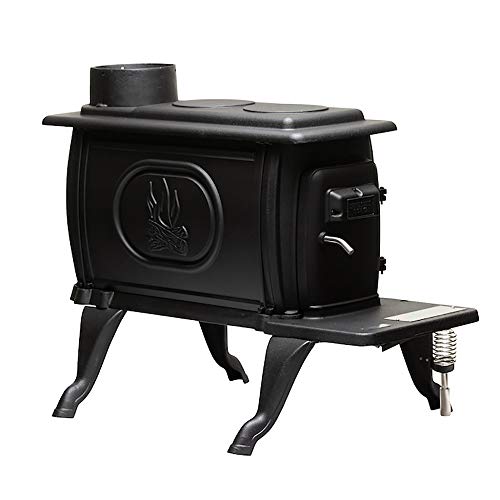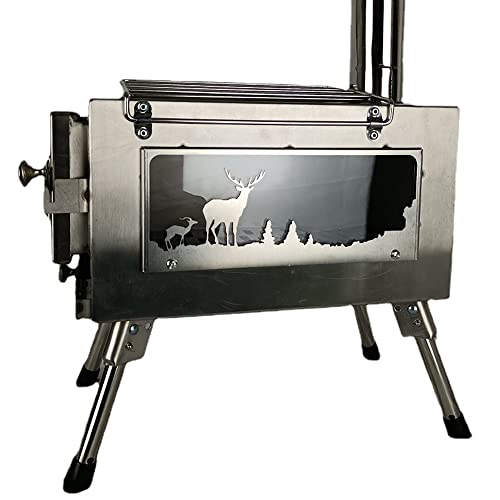ゲストハウス | What's The Reason You're Failing At Stove Wood Burning
ページ情報
投稿人 Bernie Strack 메일보내기 이름으로 검색 (37.♡.62.115) 作成日24-01-22 22:15 閲覧数145回 コメント0件本文
Address :
SZ
 How to Properly Start a Wood Burning Stove
How to Properly Start a Wood Burning Stove Wood stoves can be an excellent way to save energy and heat the room. They require some care.
Wood stoves can be an excellent way to save energy and heat the room. They require some care.A majority of modern wood stoves comply with EPA emission guidelines. Look for an EPA sticker on the underside or next to the grate, to ensure that your stove won't produce many harmful pollutants.
How to Start a Wood Fire
The smell and sound of a wood fire can be a wonderful addition to any house. However, it is important to know the correct method to create a fire on your stove. Incorrect techniques may lead to an unburned fire that doesn't burn efficiently, and produces smoke or creosote. The following tips can help you create a safe fire that can heat your home quickly and effectively.
Before you start a fire, you should check the condition of your coals and logs. If they're too damp, they will smother the flame and stop it from burning efficiently. You might also want to open the flue to let any ash that has been deposited into the stove.
Begin by placing a handful of small, dry pieces of newspaper into your stove. This will help to ignite the tinder and kindling. After the tinder and kindling have started to ignite, you can add an additional layer of larger pieces on the top. This should be done in a crosshatch fashion so that there is air between each piece of wood.
If your Premium Stainless Steel Wood Stove - Portable and Foldable stove is equipped with an automatic combustion control it will automatically pump air into the fire as it grows. This will help the fire to burn at a steady pace without having to open the stove's door to maintain it.
It is important to not use too much tinder, since this can lead to a fire that burns at an excessive rate and doesn't use the fuel as efficiently as possible. Once you've made a solid base in your stove with tinder, kindling and embers, start the main flame by laying two large base logs on the grate. On the top of these base woods lay a layer parallel to them. This method of constructing the fire is known as a "top-down" fire will result in an effective and long-lasting fire that doesn't completely consume the larger base logs.
Close the damper once your fire is established and kept it closed. Doing this too soon could cause the fire to be smothered, and it will not allow for the proper air flow, which can lower the effectiveness of the fire.
Add Wood
Stoves can be used to heat your home efficiently and save you money. They can be used alone or in conjunction with central heating or furnace system to provide the supplemental heat needed in large homes or homes with many rooms. A lot of the stoves that burn clean use a superior combustion principle that separates the burning of volatile compounds from combustible gasses and tar by providing air in two different stages. The first stage allows the combustion of volatile compounds and the second provides fresh air that is pre-heated. This enhances the combustion process and reduces odors.
The amount of heat that you get from your stove depends on the type of wood and the amount of moisture in it as well as the size of the logs. To allow the wood to dry, logs should be kept in a ventilated area for a few months before burning. If the logs are too wet they will create lots of steam, which is in essence wasted energy.
It is best to add wood to the pile in intervals and not all at one time. In addition, adding too much wood at one time can cause the temperature of the firebox to rise and produces a vortex that sucks smoke and volatile compounds that have not been burned back into the flame, which could reduce the efficiency of your stove.
It is recommended to stay clear of other combustibles, such as paper or cardboard in your stove, as they are not wood and have very different physical properties that can't be burned safely without creating dangerously high temperatures and a lot of emissions. Also, avoid using compressed combustibles, such as wood briquettes as they have a very different physical and chemical composition from actual firewood and are not type-approved for use in wood burning stoves.
If you're planning to install wood-burning stoves in your home, it's important to have it properly installed and tested by a professional. A certified WETT technician can test your stove to ensure that it is safe and efficient. They will also ensure that your chimney is functioning properly. They offer maintenance services for your stove and chimney to ensure they remain in top shape. They will inspect the areas that are accessible to your chimney to determine if there is leakage and fix any issues that are found. They will also ensure that the occupants of your home are aware of and adhere to the fire evacuation guidelines in the event of an emergency.
Adjusting the Damper
When you're not making use of your stove, a damper controls how much heat is lost through the chimney. In addition to this it can help you manage the fire. If the flue is open but the damper is too closed, the fire won't be able to burn properly and it will billow out smoke into your living area. To get the best fire with your damper adjusted properly you must play around with different locations and observe how each one affects the flames.
Typically, you should keep the damper open enough to let air in and out of the flue when the fire is burning. This will allow the fire to start and remain lit for a number of hours. The proper opening will stop the fire from being starved of air and stop it from blowing smoke.
To properly adjust your damper, you must first ensure that the fireplace is heated and that the wood stove is hot. This will ensure that the chimney stays warm and has an adequate draft. Once this is done the damper on the wood stove can be adjusted.
After the fire has been burning for an extended period, shut the damper around three quarters of the way. This will stop warm air in the room from getting into the chimney, while still permitting smoke to escape.
This is the most effective way to keep your fire burning and to prevent it from becoming too hot. If you close the damper too far it may stop the draft from working, but should it be too open, a cold wind could enter your home.
You can determine how much the damper is opened by placing your hands near the top of the inside of the flue pipe. If you feel a small breeze pushing against your palm, the damper is likely in an open position.
The damper's setting can vary a little from one stove to another and even between different types of wood. You can experiment with various settings to get an idea of the ideal setting for your stove.
Clean Up
It is crucial to clean your stove and flue after the start of a fire. This can lower the risk of a chimney fire, which is the most common cause of wood stove related fires in homes. Creosote is a sticky substance that builds up on the inside of the stovepipe and is extremely dangerous. It is caused by the moisture and wood particles that are not burned that are unable to escape the fire. It can also happen by fires that are not lit properly.
Regular cleaning helps to prevent creosote buildup. This can be done by cleaning your chimney once a year. It is also recommended to get your stove and fireplace professionally cleaned and inspected at least once a every year.
Also, it's a good idea for you to clean the ash tray and the grates regularly. It is recommended to burn only seasoned wood because it produces less creosote. It is also recommended to avoid burning cardboard, paper plastic, and other waste items. These can release chemicals that can be dangerous for respiratory illnesses and the air, and could be released into your home.
It is also essential to wash the glass of the wood stove regularly. The majority of modern wood stoves have self-cleaning windows, so they do not require as much scrubs. If you are not able to clean the glass of your Compact Wood Burning Stove And Grill for Camping (https://www.fireplacesandstove.com) stove as clean as you'd like, there are stove glass cleaners you can use on the window.
Other tips to keep your wood stove in good condition include lowering the vent when you aren't using it, and cracking windows or doors to increase airflow. This keeps the fire burning more hot and efficient. The wood stove will not have to perform as hard to circulate air. It is advisable not to stack logs, or place them on the fire for an extended duration. This can cause splits and warping. Finally, it is recommended to avoid using compressed combustible wood logs in your wood stove, as the paraffin they contain can melt and flow into the flue which could cause damage.
【コメント一覧】
コメントがありません.

